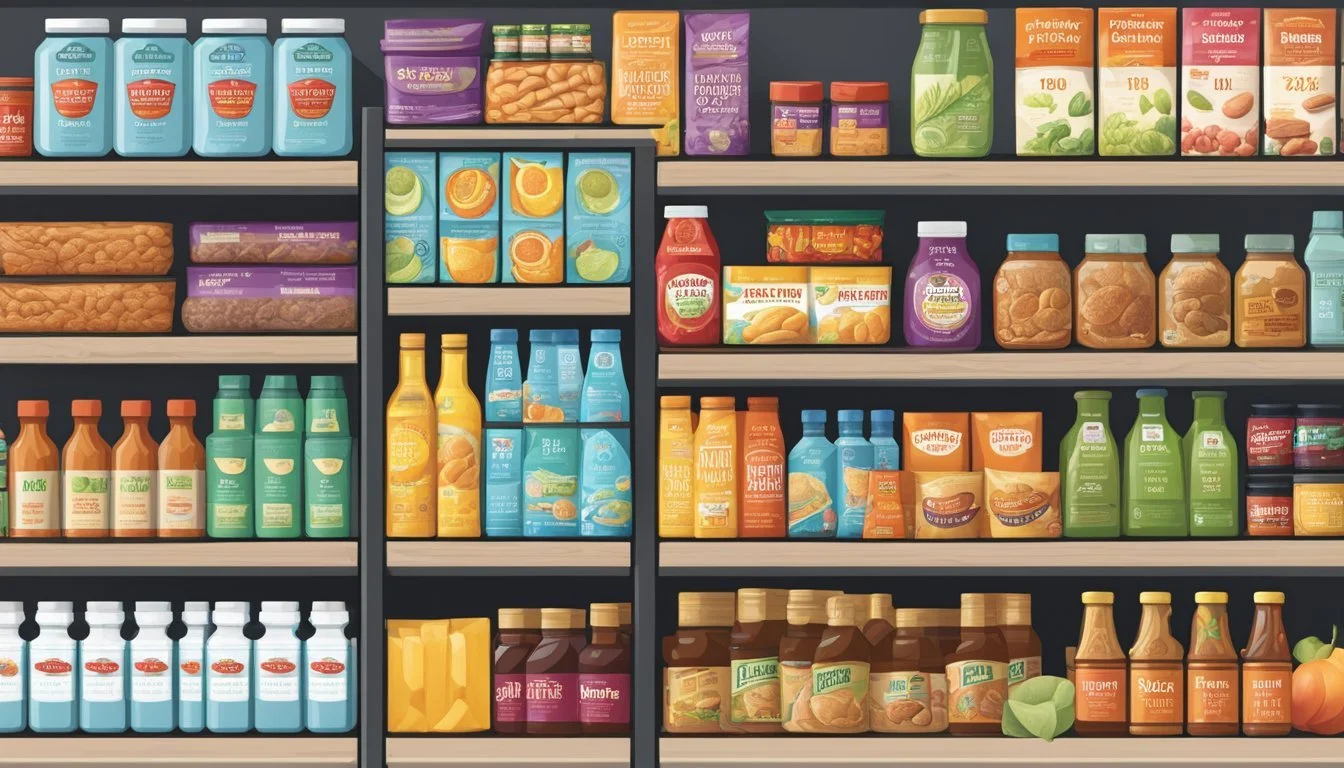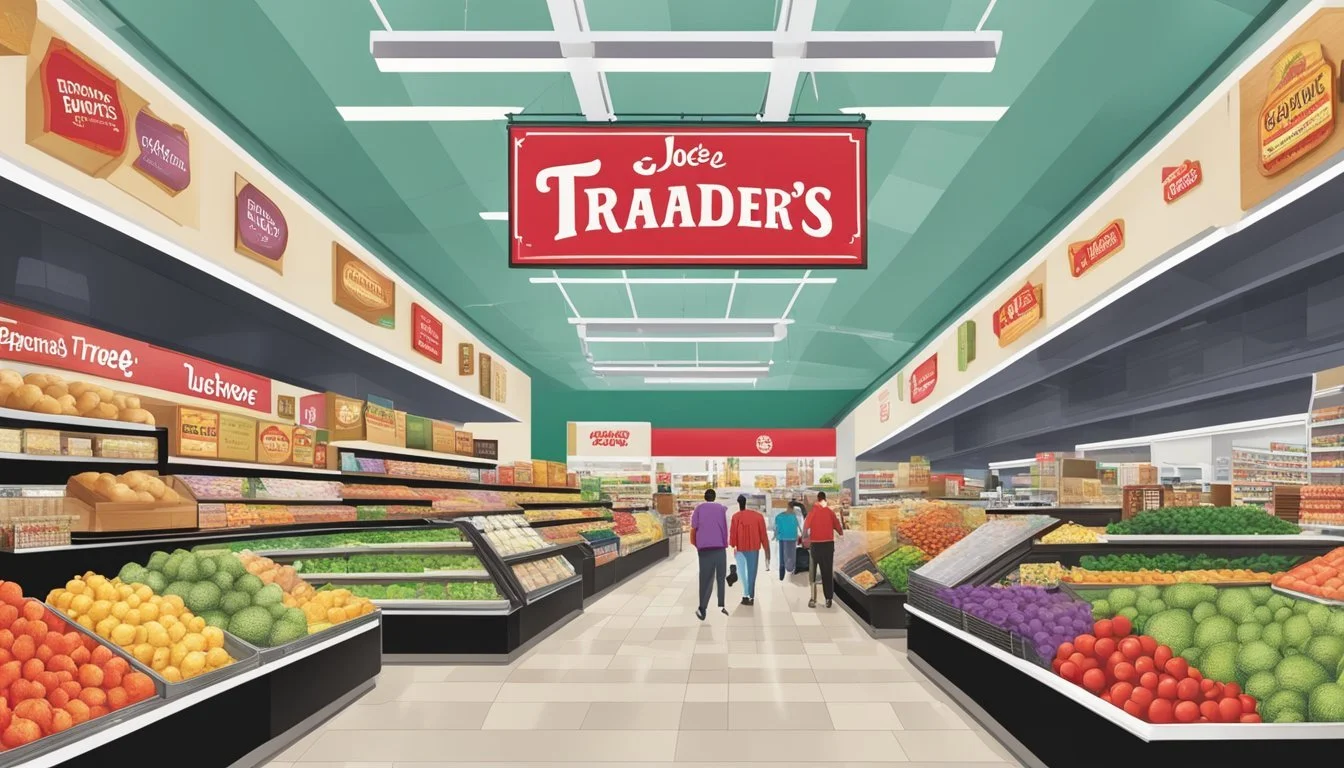Is Trader Joe's Cheaper Than Hy-Vee?
Comparative Analysis of Grocery Pricing
Part of Our Grocery Store Guide with Details on Trader Joe's Prices and Hy-Vee Prices
When shoppers consider where to purchase their groceries, one of the primary factors they often take into account is price. Trader Joe's, a popular grocery chain known for its private label products and unique selections, often enters the conversation alongside regional chains like Hy-Vee, which also has a loyal customer base. A comparison of the two stores reveals that Trader Joe's often provides significant savings. Typically, Trader Joe's prices are found to be lower by about 10% to 20% on average compared to other general grocery stores.
However, the exact differences in prices can vary depending on the types of items purchased. For example, Trader Joe's may offer better deals on pantry staples, frozen goods, and specialty items, while Hy-Vee might offer competitive pricing on bakery items and perishables. Some studies and customer checkbooks have pointed out that while Trader Joe's generally offers lower prices overall, the difference can be more or less pronounced in specific categories.
Consumers weighing their options would benefit from considering not just the sticker price, but also the value offered by each retail chain. Trader Joe's tends to focus on its own brand of goods, often organic and non-GMO, which might justify any price discrepancies with Hy-Vee, a chain that provides a more conventional supermarket experience with a broader selection of national brands. Therefore, the decision on where to shop may come down to personal preferences and shopping habits.
Background on Grocery Retailers
The landscape of U.S. grocery retailers features a mix of regional and national chains, each with their own market strategies and store formats. Trader Joe's stands out with its model of smaller stores and wide array of private label items. Founded in 1958, the chain has cultivated a distinct cultural brand. Conversely, Hy-Vee is a regional chain known for its full-service supermarkets with a strong focus on customer service and community involvement, founded in 1930.
Walmart and Target (SuperTarget) represent two of the largest retail chains, both of which include full grocery selections in many of their stores. Walmart, founded in 1962, dominates as a value-focused retailer, while Target, established in 1902, positions itself more toward the mid-market consumer, often providing exclusive brands and partnerships.
Grocery chains such as ALDI, with origins dating back to 1946 in Germany, have made a mark with their low-price strategy and efficiency-driven store layout. Similarly, Costco, founded in 1983, revolutionized grocery retail through its membership warehouse club model, catering to bulk purchases.
Meanwhile, stores like Whole Foods Market, acquired by Amazon in 2017, appeal to consumers seeking organic and natural products, despite generally higher prices. Market Basket, Lunds & Byerlys, Cub, and Fresh Thyme represent other players within the competitive grocery field, each with a distinct regional presence and clientele.
Unique to the Pacific Northwest is WinCo, employee-owned, which is recognized for its competitive pricing strategies. In contrast, chains like Food4Less and Meijer focus on a broad range of merchandise, including groceries at discounted prices, serving as a key component of their value proposition.
Grocery chains continuously adapt to consumer preferences and economic changes, maintaining a competitive environment that often benefits the end consumer through varied pricing, quality, and service offerings.
Price Comparison Fundamentals
When evaluating grocery store prices, price comparison sits at the core of determining value. Consumer decision-making often hinges on finding a balance between cost and quality. Trader Joe's and Hy-Vee present interesting case studies for such an analysis.
Consumers who meticulously track sale prices and price totals understand that even small price differences can lead to significant savings over time. For those spending approximately $250 per week on groceries, selecting a store with consistently low prices could be financially impactful.
Trader Joe's often showcases its ability to provide lower prices for many staple items. In comparing price per pound on produce and other goods, this store frequently ranks as one of the cheapest grocery stores.
Hy-Vee, on the other hand, is known for its regular deals and could offer savings when considering sale prices.
A thorough price comparison requires considering the overall price totals rather than just individual item costs. Stores may have higher prices on specific items but compensating with lower prices elsewhere.
It's worth noting that saving money isn't solely about the lowest price. Consumers often factor in quality, convenience, and service which may justify a higher price tag. When stores offer a significant percentage off, usually reflected in sale prices, smart shoppers might save more even if the store's average prices are slightly higher.
Specific Product Price Analysis
This section breaks down the cost comparison between Trader Joe's and Hy-Vee across various categories of products, providing a clear view of where consumers might find better deals.
Meat and Poultry
Trader Joe's offers competitive pricing on meat and poultry, often featuring affordable prices on items like chicken breasts and ground beef. Conversely, Hy-Vee may provide a broader selection, including high-quality cuts of meat that can affect pricing.
Fresh Produce
In the realm of fresh produce, Trader Joe's typically sells fruits and vegetables at lower prices. Their selection, while sometimes limited, is curated to offer cost-effective options for staples like apples and lettuce. Hy-Vee's produce section can be more extensive, offering both conventional and organic produce.
Pantry Essentials
For pantry essentials like sugar, butter, and peanut butter, consumers may find that Trader Joe's store brands are often cheaper than both Hy-Vee's store brands and name-brand products. Hy-Vee might occasionally offer competitive pricing through weekly specials.
Store Brands Versus Name Brands
Store brands and private label items at Trader Joe's such as cereals and cookies are typically less expensive than name-brand products. Hy-Vee offers its own store brands, but pricing often skews higher when matched against similar items at Trader Joe's.
Organic and Specialty Items
Trader Joe's is known for affordability in organic and specialty products. Hy-Vee also carries a wide range of organic items, but prices can be higher compared to Trader Joe's private labels.
Prepared Foods and Deli Items
The selection of prepared foods and deli offerings at Trader Joe's is generally priced to provide value to the shopper. Hy-Vee's larger selection and on-site preparation can result in higher prices for comparable prepared foods and deli items.
Loss Leaders and Promotions
Both Trader Joe's and Hy-Vee employ loss leaders and promotions to attract customers. While Trader Joe's has fewer sales and coupons, their everyday prices are often low. Hy-Vee might offer more frequent promotions, which can result in temporary price advantages on select products.
Quality Comparisons
When assessing the quality of offerings between Trader Joe's and Hy-Vee, consumers typically consider factors such as the freshness of produce, the quality of store brands, and the availability of organic options.
Trader Joe's has established a reputation for its high-quality store brands, encompassing a range of products, many of which are organic or have an emphasis on natural ingredients. Their products are often unique to the Trader Joe's brand, making them an attractive option for shoppers seeking both quality and exclusivity.
Hy-Vee, on the other hand, is known for offering a wide variety of national brands alongside their store brand, ensuring a broad selection for consumers. Hy-Vee's commitment to quality is also evidenced in their fresh produce section, with an emphasis on sourcing locally when possible, which can contribute to the freshness of their offerings.
A comparison of organic options between the two stores reveals that both prioritize this segment to cater to health-conscious consumers. Yet, Trader Joe's tends to offer a larger selection of organic products under its own label, which can be a deciding factor for organic food shoppers.
Trader Joe's Hy-Vee Fresh Produce Typically offers a variety of fresh and organic produce Emphasizes local sourcing and provides a wide selection Store Brands Exclusive Trader Joe's branded products known for quality Offers a mix of national and store brands, with good quality standards Organic Options Large selection of organic products under store brand Provides organic options, not always under store brand
In terms of the overall quality of food, both stores receive positive feedback from consumers, notable for their distinct approaches to ensuring customer satisfaction with their product offerings.
Consumer Savings Strategies
When consumers shop at grocery stores like Trader Joe's and Hy-Vee, they often look for the most cost-effective ways to save money. Understanding different strategies can lead to significant savings on each trip.
Loyalty Programs: Consumers can take advantage of loyalty program offerings, which often provide exclusive discounts and rewards points. For example, Hy-Vee offers a Fuel Saver + Perks® rewards program, which allows members to save on fuel and receive special promotions.
Utilizing Coupons: Both stores may offer coupons, either through their own channels or third-party sources. Customers should seek out these coupons and use them strategically to reduce the cost of their purchases.
Trader Joe's Hy-Vee No store coupons Offers store coupons No loyalty cards Fuel Saver + Perks®
Seasonal Offers: Being aware of seasonal offers can help shoppers save, as stores often discount items that are in season or during special sale events.
Prime Discounts: For Hy-Vee shoppers, there is an added benefit for Amazon Prime members, who can tap into their membership to access Prime discounts at Hy-Vee stores, thanks to the retailer's partnership with Whole Foods.
Credit Card Rewards: A number of consumers chase savings by using credit cards that offer cash back on grocery purchases. However, shoppers should be cautious about annual fees that might offset the rewards.
By understanding these strategies, consumers can make informed decisions when shopping for groceries and ensure they are getting low prices. These approaches to saving money can be combined to enhance overall savings during each shopping trip.
Grocery Chain Business Strategies
Grocery chains implement a variety of business strategies to compete effectively in the market. A key approach involves the use of store brands, which are products manufactured by or for the chains and sold under their own label. By offering these items, retailers like Trader Joe's can provide quality goods at lower prices, differentiating themselves from stores such as Hy-Vee.
Another common tactic is the usage of loss leaders. This strategy entails selling certain products at a loss to draw customers into the store, with the expectation that they will make additional purchases of regular-priced items. The loss incurred is seen as an investment in customer traffic and overall sales volume.
Market basket pricing is calculated by assessing the total cost of a group of staple items. This comparative tool often demonstrates cost leadership among competitors. Trader Joe's, for example, may have a lower market basket cost in comparison to Hy-Vee, emphasizing its competitive pricing.
The checkout experience is also streamlined for efficiency. Modern checkouts are not just about speed but also include offers and promotions to enhance customer loyalty. For instance, a grocery chain might promote their store brand by offering discounts at the point of sale.
Strategy Description Store Brands Exclusive, competitively priced products. Loss Leaders Products sold at a loss to attract buyers. Market Basket Measure of pricing competitiveness. Checkout Offers Promotions to incentivize further purchases.
Competition remains fierce in the grocery industry, and chains are constantly innovating to maintain or enhance their market share. They add value for customers through a combination of pricing, product assortment, and shopping convenience, making the choice between chains like Trader Joe's and Hy-Vee a matter of personal preference and value perception.
Customer Experience and Services
Both Trader Joe's and Hy-Vee prioritize customer experience, as demonstrated by surveys and consumer feedback. Trader Joe's has consistently ranked highly in customer satisfaction surveys. For example, Market Force's research underlined Trader Joe's success in this area, praising their attentive employees and swift response times. This indicates not just a pleasant in-store atmosphere but also an efficient checkout process, which enhances the overall shopping experience.
Hy-Vee has implemented grocery delivery options, responding to consumer demands for convenience. Both stores have been evaluated by researchers and surveyed area consumers in various ratings tables and reports. These evaluations often focus on aspects such as customer service, product availability, and store cleanliness.
Consumer Experience Metrics:
Trader Joe's:
Attentive employees
Swift checkout
Positive ratings in consumer surveys
Hy-Vee:
Multiple grocery delivery options
Good consumer services
These stores are frequently mentioned in media outlets such as Consumerpedia and shopping-focused podcasts, which analyze and compare retail experiences. Their ratings often influence consumer choices, as they reflect the quality of service provided.
In comparing these two, shoppers might find that while both aim to offer excellent service, Trader Joe’s often receives a nod for their unique in-store experience, which shoppers report to be less stressful. Hy-Vee, on the other hand, may be chosen for its versatility in shopping options, including delivery services that cater to contemporary shopping preferences.
Environmental Considerations
When comparing Trader Joe's and Hy-Vee in the context of environmental considerations, particularly concerning their produce, one can observe distinct approaches. Trader Joe's has been scrutinized for its use of hydrofluorocarbons (HFCs) as refrigerants, which are potent greenhouse gases. Despite this, they have shown a commitment to ethical sourcing, especially in their chocolate selection, which factors in concerns of deforestation and child labor.
Trader Joe's also offers a range of organic products, which appeal to environmentally-conscious consumers. Their emphasis on organic and fresh produce is evident from their store layouts and product promotions. In terms of overall quality, customers often regard Trader Joe's organic produce selection as both high-quality and responsibly sourced.
Hy-Vee, on the other hand, doesn't seem to emphasize environmental issues as prominently in their marketing. However, they offer multiple initiatives aimed at sustainability. For example, Hy-Vee has efforts in responsible seafood procurement and sells a variety of organic products as well.
Here’s a quick comparison:
Organic Offerings:
Trader Joe's: Extensive range of organic options.
Hy-Vee: Selection available, with focus expanding in recent years.
Fresh Produce Quality:
Trader Joe's: High priority on quality and sourcing.
Hy-Vee: Offers quality produce, with some stores featuring local selections.
Sustainability Initiatives:
Trader Joe's: Ethical sourcing policies, facing criticism for refrigerant use.
Hy-Vee: Responsible seafood procurement, energy-efficient efforts in stores.
Both retailers demonstrate a degree of commitment to environmental stewardship, but they also face ongoing challenges as they navigate the complexities of corporate sustainability.
Loyalty Programs and Marketing
In the retail sector, loyalty programs and strategic marketing approaches serve as pivotal factors in attracting and retaining customers. This is evident in the contrasting strategies used by Trader Joe's and Hy-Vee.
Membership Benefits
Hy-Vee offers a rewards program where customers can accumulate points that translate into discounts and savings. Members may receive exclusive coupons and offers tailored to their shopping habits. In contrast, Trader Joe's opts out of such programs, relying on strong customer satisfaction and brand loyalty built through their unique shopping experience.
Store Brand Promotion
Both retailers heavily promote their store brands—Trader Joe's with a wide variety of private label products and Hy-Vee with its own range that competes on price and quality. These store brands often act as loss leaders — priced lower than national brands to draw customers into the store.
Advertising and In-Store Offers
For Trader Joe's, marketing is carried out through their Fearless Flyer and in-store displays rather than traditional advertising channels. Hy-Vee engages in conventional advertising and often uses in-store offers to entice customers, including those with Chase bank's partnership, offering extra rewards on purchases. Hy-Vee's strategies also converge with e-commerce, leveraging Prime-like annual fees for Prime discounts and benefits that incentivize larger basket sizes and customer loyalty.
Evaluating Shopping Options in Local Area
When evaluating shopping options in the local area, consumers in the Twin Cities can consider a range of factors from pricing to chain selection. Surveys and consumer reports are useful tools in dissecting these variables.
Comparison Shopping in Twin Cities
In the Twin Cities, consumers typically evaluate the array of grocery stores to pinpoint where they can get the most value for their shopping list. Researchers suggest that prices can vary significantly between chains, making it vital for shoppers to compare costs for common items.
Price Scales Across Different Chains
Chain stores operate on different price scales, influenced by their operating efficiencies, supply chains, and target demographics. Surveys indicate that on a scale of low to high prices, discounters like Walmart and Grocery Outlet offer prices that can be up to 30 percent below the area's average. When consumers spend an average of $250 per week, this difference is substantial.
Consumer Reports and Surveys
Surveys conducted by organizations like Consumerpedia reveal that stores like Trader Joe's often present prices 10% to 20% lower than the average encountered in the area options. These figures are corroborated by podcasts and consumer ratings, which agree that certain stores offer better savings for a standard basket of goods.
Considering Individual Shopping Habits
While surveys and averages provide a baseline, individual shopping habits play a crucial role. The value found at a grocery chain can vary based on one's shopping list and purchase frequency. For example, buying bulk at warehouse clubs or opting for store brands at chains like Trader Joe's can influence the overall savings for each shopper.
Conclusion
Based on the analysis of pricing at Trader Joe's compared to Hy-Vee, the data suggests that Trader Joe's offers lower prices on a variety of grocery items. Consumers looking to save on their weekly shopping might consider Trader Joe's as a cost-effective alternative. It's worth noting that prices can vary due to locations and selected products.
Price Comparison:
Trader Joe's has been found to be 10% to 20% cheaper than average grocery stores, Hy-Vee included.
Specific savings have been identified in categories such as spices, nuts, seeds, oils, and frozen items.
Customers might also take into account the shopping experience, product selection, and quality while making their choice. Trader Joe's has a reputation for unique and diverse offerings, which might appeal to shoppers looking for more than just low prices.
Factors to Consider:
Trader Joe's might have a smaller selection compared to Hy-Vee, which could be a decisive factor for shoppers seeking variety.
Private label products dominate Trader Joe's shelves, providing a different range of goods from what is available at Hy-Vee.
In conclusion, for shoppers prioritizing budget, Trader Joe's emerges as a strong contender in the grocery market competition. However, individual preferences for variety and specific brands will play a significant role in determining the best grocery store for each customer.













